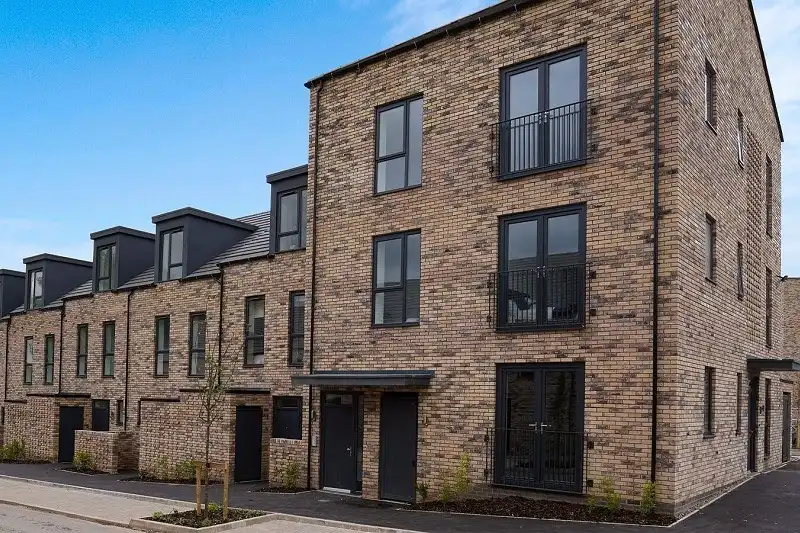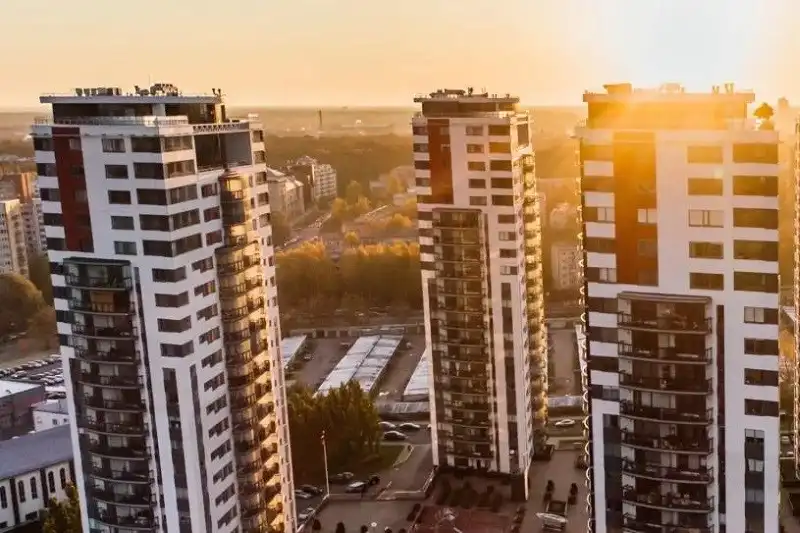Why Choosing Between New-Build and Existing Properties in London Matters for Investors
In London’s dynamic property market, deciding whether to purchase a brand-new property or an existing one is a crucial milestone for any investor. This choice goes beyond price and appearance; it directly impacts long-term returns, operational involvement, and risk levels. Each option has its own set of advantages and disadvantages, and neither is inherently superior. In fact, the key question is not “Which option is better?” but rather “Which option aligns better with my financial goals, risk tolerance, and investment style?”
London’s property market, due to its unique characteristics—such as steady demand, limited supply, and diverse neighborhoods—offers a distinct environment compared to other parts of the UK. This comprehensive report provides an in-depth analysis and comparison of new-build and existing properties, covering all related aspects—from initial costs and capital growth potential to legal considerations, energy efficiency, and lifestyle factors. The goal is to present a robust framework that empowers investors to make fully informed decisions. In the following sections, market data and facts will be examined to reveal the subtle differences between the two options, helping you chart the most suitable investment path.Financial and Economic Comparison
Real estate investment is primarily a financial decision. Therefore, a complete understanding of initial and hidden costs, income potential, and future value growth is the first and most important step. Differences between new-build and existing properties in these areas fundamentally alter the nature of the investment.
Review of Price and Initial Value
Across the UK, new-build properties generally sell at a “new-build premium.” Data indicates that, on average, new properties nationwide are 40.2% more expensive than existing ones. This price difference is often due to modern construction costs, the use of new and high-quality materials, and the presence of updated infrastructure and amenities that add value.
However, examining this specifically within the London market reveals a strikingly different picture. In January 2025, the average price of a new-build property in London was £564,000, compared to £561,000 for an existing property—a difference of only 0.5%. This narrow gap persisted in March 2025, with average prices remaining the same. This phenomenon suggests that, while the new-build premium is a reality across the UK, its impact is significantly diminished in London’s unique market.
Analyzing this data leads to a deeper insight. The nearly identical prices highlight the intrinsic value of existing London properties—thanks to prime locations, established neighborhoods, and supply constraints—which minimizes the price gap with new builds. This key difference makes new-builds in London much more competitive compared to other regions. Investors should note that the typical “premium” paid for new builds is not as steep in the capital as it is elsewhere in the UK. Additionally, purchasing a new-build often means paying for modern architecture, brand-new infrastructure, and facilities such as onsite gyms, concierge services, and communal workspaces. These features enhance the property’s appeal and help justify the higher initial price.

Rental Yield and Capital Growth Potential
A property’s attractiveness to tenants directly affects its rental yield. In London, tenants—especially students and professionals—are increasingly drawn to new-build properties. This is largely due to access to modern and luxurious amenities like gyms and energy-efficient appliances. High demand for new flats results in faster letting, shorter void periods, and thus more stable and often higher rental yields for investors. For example, rental yields for new-build apartments in London typically range from 3% to 5% per year. In expensive central areas like Kensington or Chelsea, where property prices are very high, yields drop to around 2% to 3%.
In contrast, existing properties in London also perform competitively, thanks to their character and historical appeal. Older homes in Zones 1 and 2, or those located near transport links and prestigious universities, tend to deliver strong rental performance. A key feature attracting tenants to older properties is their larger room sizes.
When it comes to capital growth, strategies vary by property type. For new builds, value appreciation is often linked to early investments in regeneration areas such as Nine Elms or White City. As these areas develop, the value of your property rises. Existing properties, due to their limited supply in high-demand areas, are considered “scarce” assets. Strategic refurbishments can significantly increase the value of older properties, potentially offering better investment returns than buying a completely new build.
Hidden and Long-Term Costs
One of the biggest distinctions between these two property types concerns maintenance costs. New-build properties typically require fewer repairs in the initial years, as everything is brand new. In addition, many come with a 10-year warranty covering structural defects, providing significant peace of mind for investors. This makes new-builds especially attractive to those seeking a “hands-off” investment with minimal operational involvement.
In contrast, existing properties may come with hidden or unexpected costs. The older the property, the greater the likelihood of encountering infrastructural issues such as outdated wiring, plumbing, roofing, and heating systems. These problems can arise unexpectedly during a tenancy, potentially leading to lost rental income and even temporary tenant relocation. Therefore, a thorough and comprehensive inspection before purchase is essential.
To provide a tangible sense of these costs, the table below lists some approximate major repair expenses in the UK in 2025:
| Type of Work | Approximate Cost Range in London (2025 Data) | Description |
| Roof Replacement | £5,000 to £12,000 | Cost varies by roof size, complexity, and type of materials used (tiles, stone, etc.) |
| Complete Rewiring | £4,500 to £8,000 | Estimated for a 3-bedroom house; may be higher in London |
| Boiler Replacement | £1,500 to £5,500 | Depends on boiler type (combi, system, conventional), brand, and installation complexity |
This table enables investors to account for potential costs as manageable figures within their budgets. While an existing property might have a lower upfront price, that advantage can easily be offset by refurbishment or major repair expenses.

Non-Financial Factors and Lifestyle
Beyond financial considerations, each property type offers a set of non-financial characteristics that influence its appeal to tenants and the quality of life in the neighborhood. Understanding these factors is essential for defining your target market and determining the most suitable investment approach.
Tenant Appeal
The appeal of new-build properties to tenants lies primarily in their modernity and comfort. These homes are designed for contemporary lifestyles, featuring open-plan layouts, large windows for natural light, and multifunctional spaces that can double as home offices or gyms. Many are equipped with smart technologies and energy-efficient appliances. For tenants seeking convenience and a “move-in ready” experience, these features offer a significant advantage.
On the other hand, existing properties often attract tenants due to their character, authenticity, and spaciousness. These homes typically have larger floor plans and more potential for customization or renovation. Unique features such as original fireplaces, period detailing, and natural woodwork provide a charm that modern buildings often lack. Older houses also tend to have larger gardens, which are especially appealing to families.
Thus, while a young professional may gravitate toward the sleek, modern features of a new-build, families or tenants looking for more space and personality may prefer existing homes. This distinction directly helps investors define and target their ideal tenant demographic.
Neighborhood and Community Characteristics
Location is a critical factor in any London property investment. Existing properties are often found in established, historic neighborhoods with a strong sense of community. These areas usually offer excellent access to public transport, schools, healthcare, and local amenities. In many parts of London, such properties are Victorian or Edwardian terraced homes, often adorned with red brick and mature green spaces—key contributors to the city’s architectural identity.
Conversely, new-builds are frequently located in large-scale development zones, often in outer boroughs or former industrial sites. These planned communities often include newly built parks, gyms, swimming pools, and pedestrian-friendly streets. Investors in these developments may benefit from capital growth as the area continues to develop.
Choosing between these two options is essentially a strategic decision between the “prime, central location” offered by existing properties and the “modern facilities in emerging neighborhoods” provided by new-build developments.

Legal Requirements, Purchase Process, and Finance
The UK property purchase process includes various legal and financial considerations, with key differences between new-build and existing homes. Understanding these is vital for a smooth and successful investment.
Conveyancing Process and Its Associated Risks
One of the main advantages of buying a new-build property is the absence of a property chain. As the first owner, you avoid complications caused by sellers relying on the success of their own onward purchases. This often makes the process more straightforward and predictable.
However, new-build purchases are not without risk. Developers typically impose strict deadlines for contract exchange—commonly within 28 days of reservation. Missing this deadline can result in losing the property and forfeiting your reservation fee. Additionally, construction delays are a frequent issue, particularly with off-plan purchases. Delays may be caused by weather conditions, supply chain disruptions, or labor shortages. A prolonged delay can even lead to your mortgage offer expiring, requiring a reapplication under potentially less favorable terms.
In contrast, buying an existing property may involve a more complex conveyancing process due to its place in a property chain. However, once the property is built and legally verified, completion timelines tend to be more certain and predictable.
Mortgages and Incidental Costs
Mortgages for new-build properties are often subject to stricter criteria due to the risk of short-term depreciation. The idea is that “a property is only new once”—meaning it may lose value shortly after purchase, similar to how a new car depreciates as it leaves the dealership.
As a result, lenders typically apply tighter loan-to-value (LTV) ratios for new-builds, requiring higher deposits. For instance, while an existing home might be eligible for up to 90% LTV, new-build apartments may be capped at 85% or lower—meaning you might need a 15% deposit or more. This can be a hurdle for investors with limited capital.
Stamp Duty and Other Costs
Stamp Duty Land Tax (SDLT) applies to both new-build and existing property purchases. However, if you’re buying a second home or investment property, higher rates apply. Non-UK residents also face an additional 2% surcharge.
That said, some developers may offer to pay a portion of the SDLT or other transaction-related fees as incentives. These offers can make new-build purchases more attractive and improve the overall financial outlook for investors.
Sustainability and Energy Efficiency
In today’s environmentally conscious world, sustainability and energy efficiency are increasingly important factors in property investment. These elements not only affect running costs but also influence tenant demand.
Financial Savings and Carbon Reduction
New-build homes are designed with energy efficiency at their core. They typically feature modern insulation, double- or triple-glazed windows, and high-performance heating systems. According to 2023 data, 85% of new-build homes were rated A or B on their energy performance certificates (EPC), while only 4% of existing homes achieved the same rating.
This has a direct financial impact: new-builds use over 55% less energy annually than older properties, translating to average savings of around £1,600 per year on energy bills. These lower operating costs make new-builds more appealing to tenants, potentially reducing vacancy periods and boosting rental yields.

Environmental Analysis: Operational vs. Embodied Carbon
The sustainability discussion goes beyond energy bills. While new-builds generate very low operational carbon emissions (from heating, cooling, and daily usage), their construction involves significant embodied carbon. Embodied carbon includes emissions from material production, transport, and construction activities. Building a new home can produce as much carbon as 20 years’ worth of operational energy use.
In contrast, existing buildings contribute to about 34% of the UK’s total annual carbon emissions through their energy use. One impactful solution is deep retrofitting—upgrading insulation, heating systems, and other infrastructure to dramatically improve energy performance. This approach not only reduces long-term emissions but also avoids the substantial embodied carbon involved in new construction.
For environmentally conscious investors, refurbishing existing homes can be a strategic and sustainable path, enhancing value while supporting climate goals.
Conclusion: Which Option Is Right for You?
As this comprehensive report has shown, choosing between a new-build and an existing property in London is not a one-size-fits-all decision. Both options offer compelling benefits and distinct drawbacks. The best choice depends entirely on your personal investment goals, risk appetite, and time horizon.
Choose a new-build property if you:
- Prefer a “hands-off,” low-maintenance investment with minimal repair needs.
- Value stable rental yields driven by high demand for modern amenities.
- Want to benefit from energy savings and reduced operational costs.
- Can tolerate construction delays and short-term value depreciation.
Choose an existing property if you:
- Aim to boost value through renovation and property upgrades.
- Prefer the charm, space, and historic appeal of traditional neighborhoods.
- Are prepared to manage occasional maintenance surprises and associated costs.
- View older properties as unique, limited-supply assets with long-term value.
Ultimately, both property types can play a valuable role in a well-diversified investment portfolio. The most important step is to conduct thorough research and align your decision with a well-defined investment strategy—one that supports your financial objectives and long-term vision.